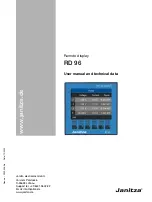
4
VC II 230/400-3...15
3.
General description
The devices of the VersiComb II type enable soft start and non-wearing braking of three-phase
asynchronous motors. Their advantages in comparison with direct-on-line starting or star-delta
starting are a torque increase without jerk and a current reduction during the starting phase. The
VersiComb-devices are used for drives that require a soft starting torque in order to protect the
drive components and which, for safety and functional reasons, have to be reliably slowed down.
When the soft start is over, the power semiconductors are bypassed by integrated relays. After
the motor contactor has opened, braking is initiated. An integrated standstill detection switches
the braking current off after the motor has come to a standstill. The fault signaling contact
indicates if the motor has not come to a standstill within the maximum braking time.
Since the standard EN 954-1 calls for a tried and tested component (contactor) in order to cut the
drive power off, a motor contactor has to be connected in series before the combined soft start
and braking device.
Special features
•
controlled by microcontroller
•
two-phase controlled soft start
•
integrated bypass relays
•
reduction of starting current peaks
•
DC braking via controlled thyristor bridge
•
integrated braking contactor
•
integrated standstill detection
•
monitoring of deceleration time
•
suitable for all asynchronous motors
•
for snap-on mounting onto 35mm DIN rail
•
wide-voltage-range - Option „B“
4.
Usage to the intended purpose
The devices of the VersiComb II series are electrical equipment that is used in industrial electrical
power installations. They are designed for application in machines, in order to reduce the starting
torque and starting current peaks and to slow down centrifugal masses on drives with three-
phase induction motors.
Typical applications
•
vibrators
•
wood working machines
•
centrifuges
•
drives with large rotating masses
•
belt drives
Summary of Contents for VersiComb II 230-3
Page 23: ...22 VC II 230 400 3 15...
Page 24: ...VC II 230 400 3 15 23...
Page 25: ...24 VC II 230 400 3 15...
Page 26: ......






































